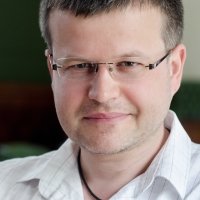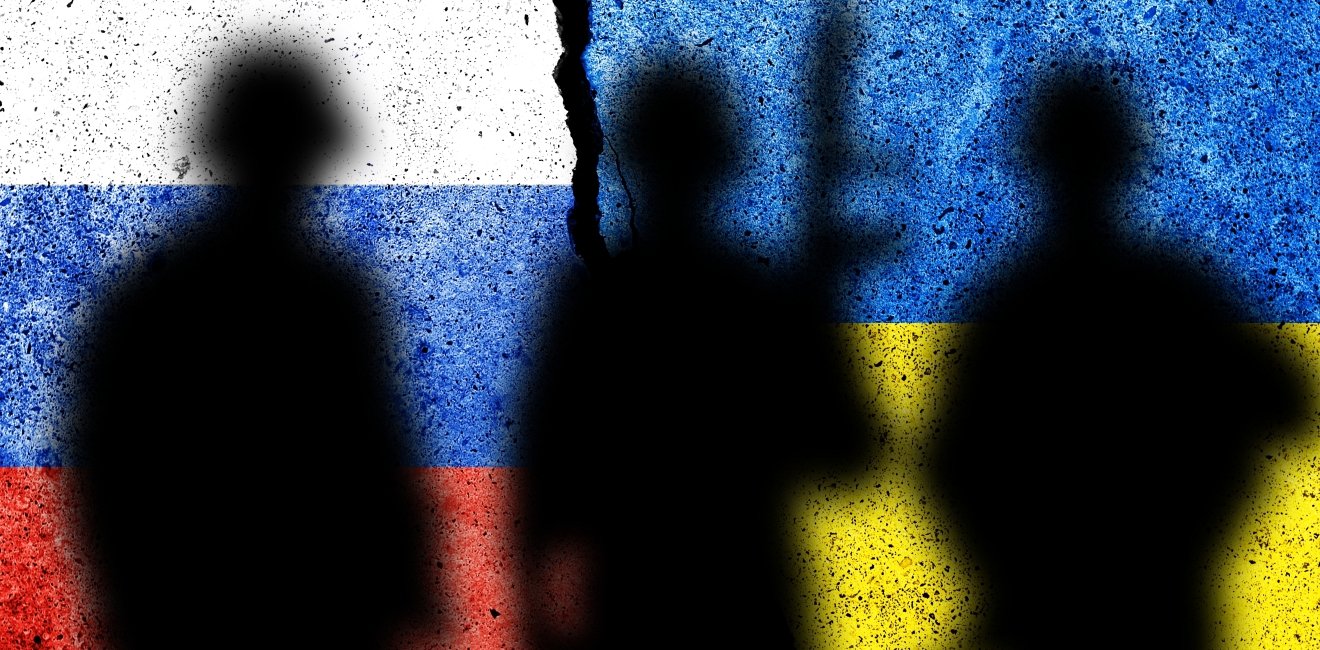
A blog of the Kennan Institute
BY TETYANA MALYARENKO AND BORYS KORMYCH
Putin's decision to recognize the self-declared Donetsk People’s Republic (DPR) and Luhansk People’s Republic (LPR), breakaway territories in Ukraine’s Donbas, may signal a change of course for the Russia-Ukraine conflict. With this step, the Kremlin, for the first time in eight years of fighting, officially recognized controlling the DPR and LPR as its project. Paragraph 4 of Putin's decree speaks directly to the occupation of these territories by the regular Russian army. Even his attempts to erect reasons for recognizing the DPR and LPR by claiming ceasefire violations and staging a fake evacuation of Donetsk look rather clumsy and focused primarily on the Russian public.
The biggest question now, following the deployment of Russian troops to the LPR and DPR, is whether recognition will mark the end of an expectation of a military confrontation between Russia and Ukraine or the start of a more deadly phase of engagement.
Words and Deeds in the Donbas
To better understand the tactics of contemporary conflicts, in which information warfare occupies a robust place, it is necessary to distinguish the separate performances of words and deeds. From mid-November 2021 to mid-February 2022, the media ginned up expectations of a full-scale conventional invasion by Russia, in the style of twentieth-century warfare, but what did we actually see?
We saw a hybrid war, traditional for modern Russia, in which priority was given to nonmilitary methods of influence—cyberattacks, coercive diplomacy, military exercises along the border, the blocking of seaports, and the use of private armies and proxy forces. During this period Russia once again demonstrated the key characteristics of its military doctrine (the so-called Gerasimov Doctrine): asymmetry, a blurring of peace and war, and managed escalation and de-escalation. The recent escalation in the Donbas does not depart from this doctrine. Recognition of the DPR and LPR and the deployment of Russian troops there project military power not only over the non-controlled territories but across all of eastern Ukraine. The Russian fleet has behaved similarly in the Black Sea and the Sea of Azov, illegally carving out training grounds in shared waters. Of course, formally, Russian troops entered the territory of the sovereign Ukrainian state, which can be expected to provoke a strong response from both Ukrainian forces and the international community. In fact, however, recognition of the DPR and LPR and the entry of Russian troops into those territories have only made clearer Russia’s hand in the conflict, which Moscow had formerly tried to clumsily disguise through the use of proxies and subterfuge. These joint steps on Russia’s part will strengthen the position of Ukraine in international courts but will not change the nature of the conflict.
Russia’s tactics in the conflict, then, demonstrate continuity. What did we see from Ukraine? Unlike Russia, Ukraine long ago started preparing for a full-scale conventional war, as evidenced by its efforts to achieve adequate military parity with Russia. For example, the number of combat-ready Ukrainian ground forces increased from a mere 6,000 troops in 2014 to 150,000 by the end of 2021, and 2022 plans focus on recruiting 130,000 reservists into the newly created Territorial Defense Forces. In any major confrontation with Russia, however, Ukraine undoubtedly is a weaker actor in terms of its human, economic, and military potential. Thus, to survive in a long-term confrontation with a stronger adversary, Ukraine must develop effective asymmetric tactics.
Ukraine seems to have become more resilient to hybrid threats in the eight years of conflict it has already sustained. For example, the Ukrainian interior minister said that any insurgents attempting to take over administrative buildings would be shot by special forces without warning, and Ukrainian authorities managed to avert the blocking of Black Sea ports by quickly confirming a safe maritime corridor that bypassed Russia’s declared military training area. Both moves would have been inconceivable at the start of Russian aggression in the spring of 2014. In aggregate, a conventional threat of force remains Russia’s most effective coercive instrument and the greatest military concern Ukraine must address.
In this light, Ukraine's efforts to achieve a conventional parity with Russia look irrational from a strategic perspective. But that's true only if we consider Ukraine and Russia as opponents in a two-actor game. Russia's ambitions are much broader than control over Ukraine, and the administration in Kyiv is viewed by the Kremlin as a client of the West rather than as an independent actor. In the logic of a multi-actor conflict, Russia's asymmetric tactics aim at saving resources in a strategic competition with NATO, but Ukraine’s strengthening of its conventional capabilities has laid waste to the Kremlin's plans, forcing it to deploy, and potentially lose, more troops and equipment.
Ukraine’s Economy Needs a Technological Future, but Russia Fears Its Modernization
In this race to exhaustion, Ukraine's domestic affairs have not been taken into consideration. In recent years, Ukraine has consolidated a resource economy, exporting agricultural products and natural resources and importing weapons. Ukraine is critically losing in technological development, becoming like countries in the global south in its economic model. Since unemployment pushes Ukrainians to emigrate, the government, to cover the cost of rising military imports, has increased the tax burden on those who remain, and has cut public expenditures on social infrastructure, education, and health.
As President Zelensky noted in his speech at the 58th Munich Security Conference on February 19, in a never-ending war with Russia, the only way for the Ukrainian state to survive is through a technology-based model of economic development. Kyiv must become more pragmatic and more confident in protecting national markets and national production in high-tech industries, including arms production. Economic development based on technological development would allow the Ukrainian army to rearm and move away from Soviet-style armed forces to a modern professional army that could deter Russia without huge casualties on the Ukrainian side. More important, it would make Ukraine a more attractive country to live in, with remittances from labor migrants no longer the main source of financial flows to Ukraine.
Any desire on Ukraine’s part to modernize, however, seems to be a sticking point with Putin. A good part of his “pre-recognition” speech was devoted to condemning Ukrainian reforms and close cooperation with the West. Modernization thus would require resolving the Donbas issue, which Kyiv has managed to keep to a low level of frozen conflict for eight years in the hope that in the meantime, it could find a way to reintegrate the non-controlled territories without threatening the country's pro-Western political course. In fact, Kyiv primarily sees the Minsk accords as a ceasefire instrument, whereas Moscow, as the continuation of its coercive tactics suggests, believes the accords should be fulfilled to the letter, which would give the pro-Russia separatists in Ukraine’s East a voice in the country’s federal policies, an outcome unacceptable to Kyiv. These two intractable positions leave little space for a breakthrough. The Kremlin's decision to recognize the DPR and LPR may therefore signal its awareness of the potential to exhaust its nonmilitary coercive tools in managing the conflict in the Donbas and prepare the way for the employment of conventional forces, perhaps following the model of its intervention in Georgia in 2008.
Demagogy versus Actions on the Ground
At the same time, there is an apparent discrepancy between the tone and degree of intensity of Putin's “pre-recognition” speech and the decisions he actually put into effect. The speech contained much demagogy, appealing to emotions rather than reason in denying the existence of Ukraine as an independent state; making threats and lodging accusations against the United States and NATO; making insinuations about missiles and NATO bases in Ukraine and missile ranges and flight times to Moscow; and questioning Ukraine's ability to develop nuclear weapons. In terms of content, the speech was more like a declaration of war. Against this background, the decision to recognize the LPR and DPR looks somewhat dated.
There are several options open to Moscow, and different ways to interpret its recent actions. It could be that the West's pressure in recent months and its military assistance to Ukraine influenced the Russian leadership and forced it to take more limited steps than planned previously. Alternatively, Moscow may not have been fully prepared for a military action, and recognition of the LPR and DPR could have been a face-saving measure for the authorities in the eyes of the Russian public. It could also have been a way for the Kremlin to postpone bigger decisions until the situation on the ground better suited its aims.
However it is parsed, recognition of the DPR and LPR by Russia clearly demonstrates a discrepancy between words and deeds. Though justified in words as a way to end the violent conflict and save the lives of the civilian population, recognition of the DPR and LPR and the deployment of the Russian army did not lead to a ceasefire along the demarcation line. The growth of the military potential of the conflicting parties will very likely lead to even more victims, both on the territory of the DPR and LPR and in the Ukraine-controlled Donbas. Thus the recognition of the DPR and LPR might be the only a prelude to Russia’s larger destabilization tactics, affecting a wider Ukrainian territory and a larger swath of Ukrainian society.
The opinions expressed in this article are those solely of the authors and do not reflect the views of the Kennan Institute.
Authors



Kennan Institute
After more than 50 years as a vital part of the Wilson Center legacy, the Kennan Institute has become an independent think tank. You can find the current website for the Kennan Institute at kennaninstitute.org. Please look for future announcements about partnership activities between the Wilson Center and the Kennan Institute at Wilson Center Press Room. The Kennan Institute is the premier US center for advanced research on Eurasia and the oldest and largest regional program at the Woodrow Wilson International Center for Scholars. The Kennan Institute is committed to improving American understanding of Russia, Ukraine, Central Asia, the South Caucasus, and the surrounding region through research and exchange. Read more

Explore More in Focus Ukraine
Browse Focus Ukraine
Talking to the Dead to Heal the Living

Ukrainian Issue in Polish Elections


